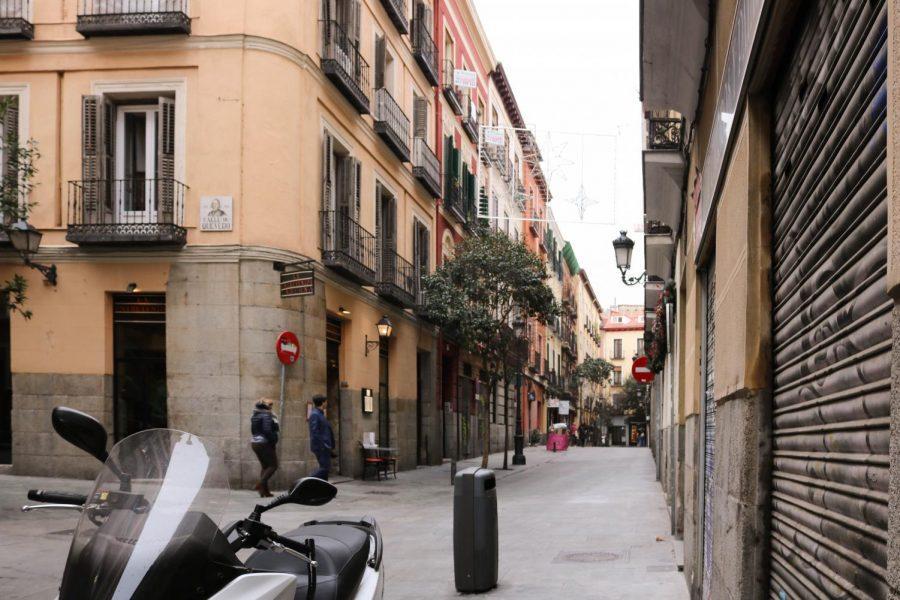The Borders of Diversity, Equity and Inclusion
The streets of Madrid where NYU students have a chance to study abroad. (Photo by Jemima McEvoy)
March 26, 2018
A few weeks ago, an anonymous Indian junior at NYU Madrid noticed two Spanish women staring at her at the bus stop. She responded with prolonged eye contact and walked onto the bus. She found a seat — a selection which got the two women talking.
“You know, Arabs are just like us. They’re just as white as us,” one woman remarked.
The other woman disagreed.
“No, not exactly like us. They’re more of a white-olive,” she said.
“True. They don’t look Spanish white. When you see a white Spaniard, you think they are probably rich and intelligent, and you definitely don’t think that when you look at an Arab.”
The student turned around to the women, expressed her disapproval and got off at her stop.
At the NYU Madrid orientations, they repeatedly spit out, “Madrid is the most diverse city in Spain.” NYU’s testimony lacks context, misleading students from the so-called cultural enclave they’re about to live in for a semester. Although Madrid is the most diverse city in Spain, its diversity doesn’t match up to the level of diversity students may be accustomed to in New York.
Unbeknownst to some, Spain only became a democracy in the late 1970s after the death of the lifelong dictator Francisco Franco. As part of its Europeanisation efforts, the country opened its borders and has only begun to find a break in its homogeneity within the past 30 years. The lack of exposure to people of color has led to an insular culture that has resulted in racism and xenophobia, based more often in ignorance than on malicious intent. Regardless of intention, this undiscussed atmosphere has a strong impact on the experiences of students of color at NYU Madrid and for many and has resulted in a prolonged race-based culture shock.
Unfortunately, NYU Madrid isn’t the only abroad site where students have faced racial discrimination. An anonymous black junior at NYU Buenos Aires felt threatened in the streets as fellow pedestrians catcalled her with names like ‘morena’ and ‘morrocha,’ both of which she was unfamiliar with.
“It took me a long time to get used to being stared at blatantly and constantly being asked where I was from,” she said. “If the person didn’t think the United States was a good enough answer, they then asked where my parents are from.”
People have assumed that she is from Brazil or Africa.
“Even though I have been here for a while now and I have gotten used to it and I can handle it, there are still days where it is very upsetting,” she said.
Overcome with discomfort from unhealthy race relations, Danielle, a black Guyanese American junior, left NYU Florence early.
“Before I arrived, I was really looking forward to my time abroad and was excited to have an experience of self-discovery and exploration,” she said. “Unfortunately, this changed when I realized there was a threat to my identity because I was black.”
During Danielle’s first week in Florence, a racially-charged terrorist attack occurred two hours away. People shouted the n-word at her in the streets, and Blackamoors, or slave statues, confronted her on campus.
“I felt like my identity was being threatened from every angle and after a week it was in my best interest to leave the program.”
Every country comes with its own history that informs the way race relation takes place within its borders. While white students may research fun activities and affordable fitness centers in their host country, students of color must often take time to research how they may be received due to their salient identities. I know I did. But all this preliminary reading doesn’t prepare you for the actual racial environment. I’ve come to understand the Spaniards perspective, but that doesn’t mean I’m any more comfortable.
The NYU Madrid staff have begun to take note of students’ discomforts and have created platforms such as @madrid_faces on Instagram.
Undoubtedly, the university offers its students a number of resources to prepare for abroad experiences. What we need as students of color to better prepare ourselves is for the conversations to start sooner: having time dedicated during orientations to facilitate discussions between students of color who have studied at NYU abroad sites and those who intend to. Additionally, after the first few weeks at an abroad site, the administration should actively create a space where students of color can discuss their experiences and inform the administration of what should be done to support them.
At the end of the day, most students enjoy their experiences abroad, even if they are marked by some uncomfortable situations. But students of color should not have to learn to normalize levels of discomfort that would not be seen as productive had they happened to white students. Diversity, equity and inclusion needs to extend beyond the borders of the New York campus. It is not NYU’s responsibility to change the world for us, but it is NYU’s responsibility to prepare us to the best of its abilities to change the world for ourselves.
Email Laurie Germain at [email protected].



























































































































































